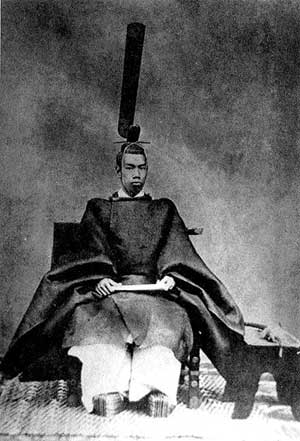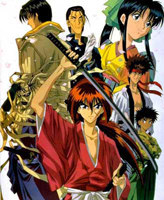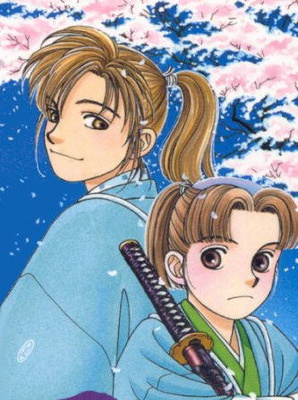Interest
Today in History: End of the Meiji Era
posted on by Christopher Macdonald
 On July 30, 1912 Emperor Mutsuhito, posthumously named Emperor Meiji, died. Emperor Meiji was the 122nd emperor of Japan and reigned from February 3, 1867 until July 30th, 1912. Mutsuhito was born on November 3, 1852 during the Edo Period.
On July 30, 1912 Emperor Mutsuhito, posthumously named Emperor Meiji, died. Emperor Meiji was the 122nd emperor of Japan and reigned from February 3, 1867 until July 30th, 1912. Mutsuhito was born on November 3, 1852 during the Edo Period.
Established by Tokugawa Ieyasu in 1603, the Tokugawa Shogunate ruled Japan throughout the Edo period (Named after the city of Edo, now Tokyo, where Tokugawa established his capital), and the emperor, while officially the head of state, was effectively a mere figure head.
The Meiji Restoration
Significant resistance to the Shogun's rule resurged during the final years of Mutsuhito's father, Emperor Kōmei's, reign. By the time Emperor Kōmei died in February 1867 and Mutsuhito ascended to the throne of Japan, the country was in full revolt. On November 9 of the same year, the Tokugawa Shogunate came to its end and the Shogun resigned from office 10 days later. Shortly thereafter, on January 3rd, 1868, the Meiji Restoration was complete and the Emperor became, once again, the practical ruler of Japan. War with remnants of the Shogun's forces (Bakufu) continued however until June, 1869. Following the final defeat of the Bakufu, the era was renamed the "Meji Era" (The Era of Enlightened Rule).
During his life, Emperor Mutsuhito presided over an era of rapid modernization and liberalization. Once again however, the Emperor did not really rule Japan. The country was effectively controlled by the Genrō, powerful politicians and military leaders and Samurai who lead the Meiji Restoration.
 Emperor Mutsuhito died on July 30th, 1912, aged 59. He was the first emperor in many generations to live into his 50s. Following his death, per Japanese custom, the Emperor was given a posthumous name, and was named after the era over which he presided, Meiji. Emperor Meiji was succeeded by his son, Emperor Taishō and Japan entered the Taishō era (this was the beginning of the Japanese tradition of changing the era name with every new emperor).
Emperor Mutsuhito died on July 30th, 1912, aged 59. He was the first emperor in many generations to live into his 50s. Following his death, per Japanese custom, the Emperor was given a posthumous name, and was named after the era over which he presided, Meiji. Emperor Meiji was succeeded by his son, Emperor Taishō and Japan entered the Taishō era (this was the beginning of the Japanese tradition of changing the era name with every new emperor).
Interestingly, the last Shogun, Yoshinobu Tokugawa, died one year later, on the 22nd of November, 1913. After retiring he was allowed to live the remainder of his days in peace and was even named to the upper house of the Japanese Diet. One of his daughters, and one of his grand daughters, married into the Imperial family (however neither married an emperor or crown prince).
Many anime and manga are written about the Meiji Restoration. In Rurouni Kenshin, Himura Kenshin is a former assassin for the anti-shogunate forces. The manga itself takes place during the early years of the Meiji Era, while the prequel OAVs take place during the Bakumatsu.
 In Kaze Hikaru, Sei Tominaga disguises herself as a young boy and joins the counter revolutionary Shinsengumi who are fighting to maintain the Shogunate. Had both been based on real stories, Sei Tomonaga and Himura Kenshin might have faced one another on the battlefield.
In Kaze Hikaru, Sei Tominaga disguises herself as a young boy and joins the counter revolutionary Shinsengumi who are fighting to maintain the Shogunate. Had both been based on real stories, Sei Tomonaga and Himura Kenshin might have faced one another on the battlefield.
This year's Dai - Shogun - Great Revolution anime takes place in an alternate version of Japan, where the Meiji Restoration never occurred and in 1869 the country is still ruled by the Shogunate.
For more information about Emperor Meiji: Wikipedia: Emperor Meiji. For more information about the Meiji Restoration: Wikipedia - Meiji Restoration.
Want to recommend more anime or manga that take place during the Meiji Restoration? Post your comments in the talkback!
this article has been modified since it was originally posted; see change history